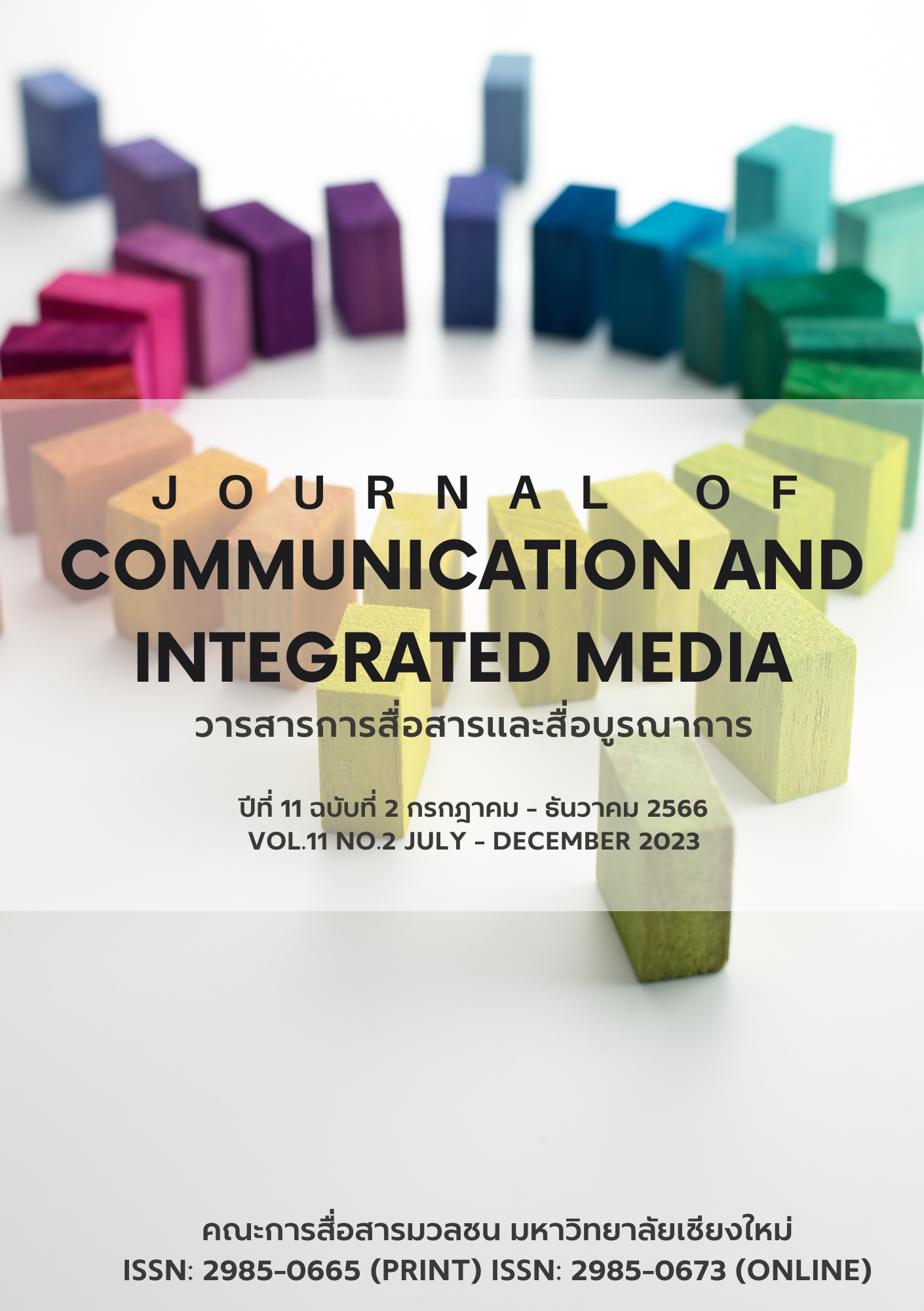Persuasive Strategies of Progressive Movement on Facebook fan pages
Main Article Content
Abstract
Independent research on the faculty's persuasion strategy advances through social media Facebook. The purpose of this study was to study the strategy of persuading the target group of the Faculty of Advancement through social media, Facebook. By studying the content analysis method, studying from secondary data (Secondary Data), i.e. studying information from online platforms that result from the planning process from political communication methods. for political purposes of the party by studying the communication process from Facebook Fan page (Facebook Fan page). Content Analysis of Political Communications of the Faculty of Progress through social media Facebook using the information gathered through the record form Analyze the content through the concept of 9 persuasion strategies. The persuasion strategies of the Faculty of Progress pages were used a total of 208 times, of which the strategy for building good communication relationships (Liking) was used the most, 85 times, followed by. is a data description strategy. (Explanation) 40 times and the least used strategy is Strategy for making merit (Debt) 1 time, respectively.
In addition, there is a unique communication, that is, there are details that are content in educating through political events for the public or a group of members of social media networks to easily understand the event using the strengths. of social media networks is a #hashtag mark, such as #Progressive Party in communication to become the center of communication of the party and express opinions of political networks on social media networks, hoping to create a trend The interest of society from both parts of the communication content is characterized by the transmission of messages that are their own political activities and those of the Faculty of Progress. Passengers sent to groups of people contain content that solicits or persuades them to become members of the Progressive Council. Therefore, the Faculty of Progress Therefore, communication technology has been used called social media networks that have already used Thai people in everyday life in order to be able to reduce the period of political activities.
Article Details

This work is licensed under a Creative Commons Attribution-NonCommercial-NoDerivatives 4.0 International License.
ลิขสิทธ์ที่ผู้เขียนบทความต้องยอมรับ
References
กาญจนา แก้วเทพ. (2552). สื่อสารมวลชน ทฤษฎีและแนวทางการศึกษา (พิมพ์ครั้งที่ 1). ห้างหุ้นส่วนจำกัดภาพพิมพ์.
คณะก้าวหน้า. (2563). คณะก้าวหน้าร่วมสานต่อภารกิจจากอนาคตใหม่. https://progressivemovement.in.th
นันทนา นันทวโรภาส. (2558). ทฤษฎีการสื่อสารมวลชน. ใน หลักและทฤษฎีการสื่อสารหน่วยที่ 9 – 15. มหาวิทยาลัยสุโขทัยธรรมาธิราช
พรรคอนาคตใหม่. (2562). ข้อมูลประวัติพรรคอนาคตใหม่. https://futureforwardparty.org/about-future-forward-party
พฤทธิสาน ชุมพล. (2552). ระบบการเมือง: ความรู้เบื้องต้น. สำนักพิมพ์จุฬาลงกรณ์มหาวิทยาลัย
พัททดล เสวตวรรณ. (2564). การสื่อสารทางการเมืองของนักการเมือง. วารสารการบริหารนิติบุคคลและนวัตกรรมท้องถิ่น, 8(2), 377-388.
ศิริวรรณ เสรีรัตน์ และ, ปริญ ลักษิตานนท์, ศุภร เสรีรัตน์, องอาจ ปทะวานิช. (2541). การบริหารการตลาดยุคใหม่. โรงพิมพ์ธีระฟิล์มและไซเท็กช์.
สำนักงานพัฒนาธุรกรรมทางอิเล็กทรอทรอนิกส์. (2565). การสำรวจพฤติกรรมผู้ใช้อินเทอร์เน็ตในประเทศไทย. https://www.etda.or.th/th/Thailand-Internet-User-Behavior-1.aspx
Marwell, G. & Schmitt, D. R. (1967). Dimensions of compliance – Gaining Behavior: An empirical analysis. Sociometry, 30(4), 350-364.
Wiseman, R. L., & SchenckHamlin, W. (1981). A multidimensional scaling validation of an inductively derived set of compliance gaining strategies. Communication Monographs, 48(4), 251-270.

